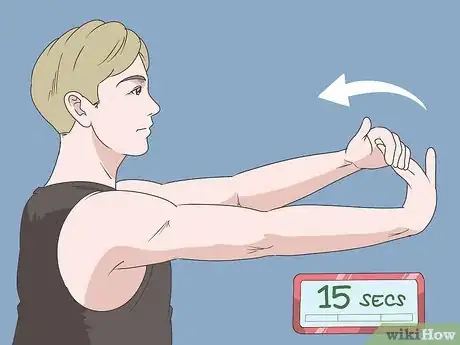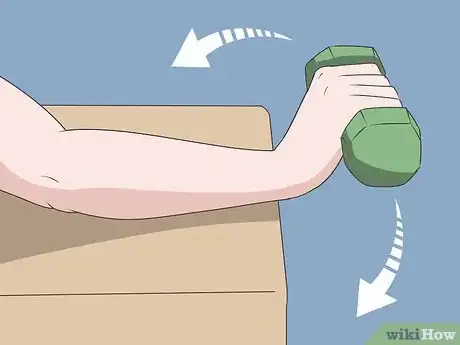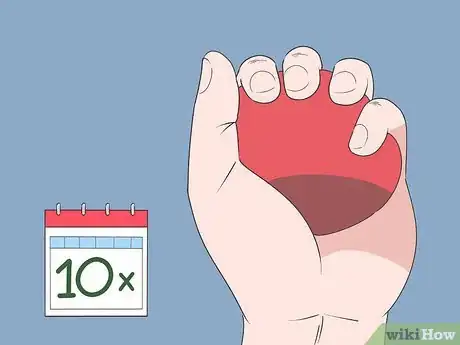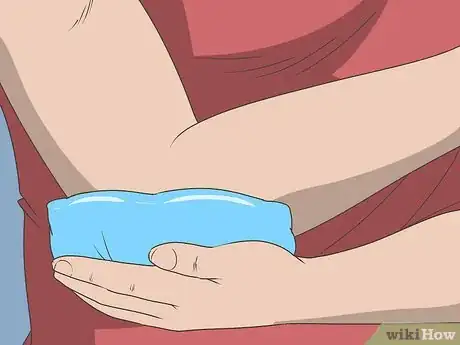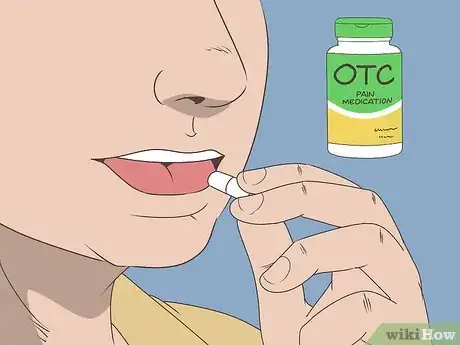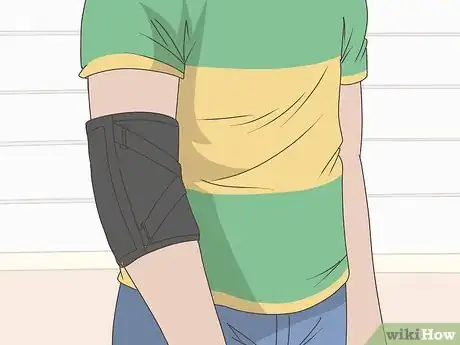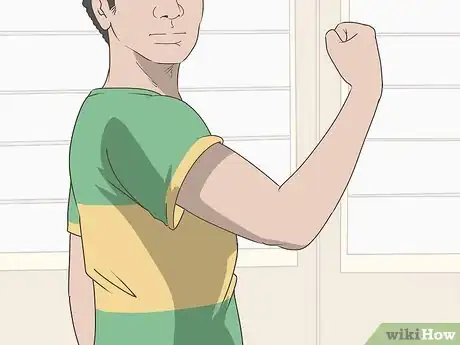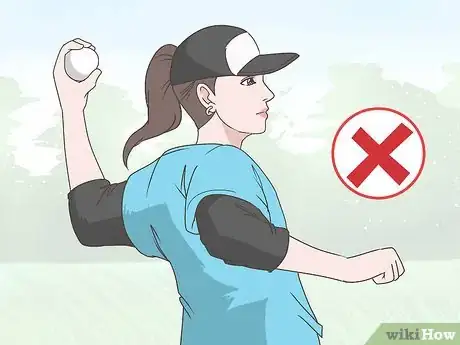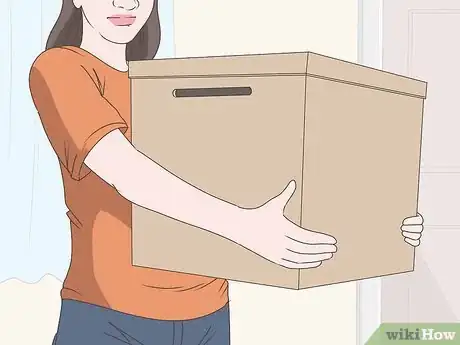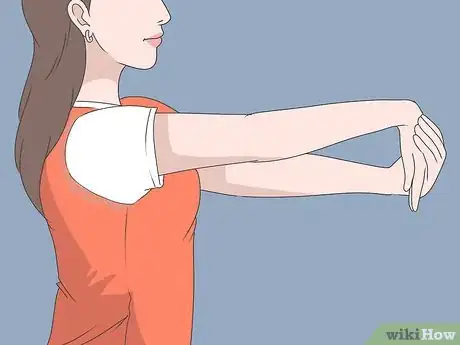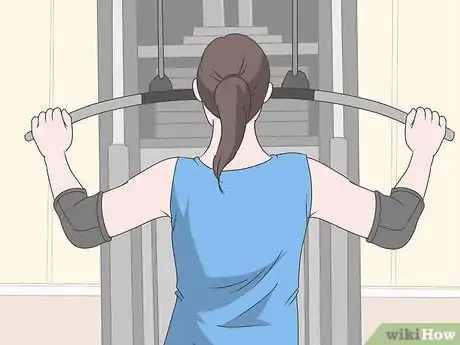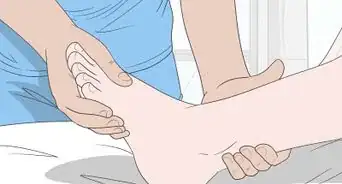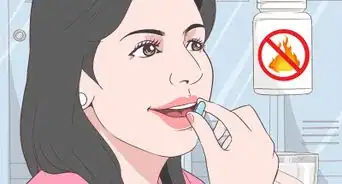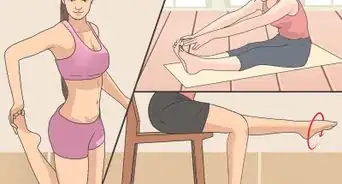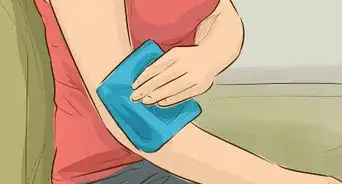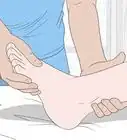This article was co-authored by Jonathan Frank, MD and by wikiHow staff writer, Eric McClure. Dr. Jonathan Frank is an Orthopedic Surgeon based in Beverly Hills, California, specializing in sports medicine and joint preservation. Dr. Frank's practice focuses on minimally invasive, arthroscopic surgery of the knee, shoulder, hip, and elbow. Dr. Frank holds an MD from the University of California, Los Angeles School of Medicine. He completed an orthopedic residency at Rush University Medical Center in Chicago and a fellowship in Orthopedic Sports Medicine and Hip Preservation at the Steadman Clinic in Vail, Colorado. He is a staff team physician for the US Ski and Snowboard Team. Dr. Frank is currently a scientific reviewer for top peer-reviewed scientific journals, and his research has been presented at regional, national, and international orthopedic conferences, winning several awards including the prestigious Mark Coventry and William A Grana awards.
There are 17 references cited in this article, which can be found at the bottom of the page.
This article has been viewed 14,799 times.
If you spend a lot of time shooting hoops, lifting weights, or playing tennis, you may eventually run into tendonitis in your elbow. If this is you, don’t worry. Tendonitis is one of those conditions that’s usually pretty straightforward when it comes to recovery. There are a few ways to get back into tip-top shape and strengthen the tendons, but it’s extremely important that you take a few days off and give the tendons time to heal on their own first. It may be frustrating or painful now, but your elbow will thank you in the future if you give it time to heal and exercise once you’ve recovered.
Steps
Stretching and Exercising
-
1Pull your fingers back to warm up with a wrist extension stretch. Stick your arm out in front of you with the back of your palm on top. Use your healthy arm to apply light pressure to the inside of your fingers and pull the wrist back towards you.
Hold this stretch for 15 seconds. Take a few seconds off and repeat this process 5 times before doing it with your other arm.[1]
Working the elbow out will improve your overall strength and flexibility after you’ve recovered. You can also use these exercises to help a pain-free elbow recuperate a bit faster. Do not do any of these exercises if you’re actively in pain or the movement irritates your elbow, though.[2] -
2Bend your wrist down in the opposite direction to do a wrist flexion. Hold your arm out again and keep the back of your palm on top. Use your free hand to pull your fingers down under your wrist.
Apply some light pressure to pull the hand back towards you and hold it for 15 seconds. Take a quick break and then repeat this process 5 times before switching arms.[3]
The tendons in your wrist and forearm run up to the elbow, so a lot of the exercises and stretches that will strengthen your tennis elbow involve your wrist and forearm.Advertisement -
3Do wrist extensions with a light weight to strengthen the elbow. Rest your arm on a table with your hand hanging over the edge, holding your hand flat so your palm is facing toward the ground.
Grab a 2–5 lb (0.91–2.27 kg) weight, depending on your comfort level, and lift your wrist slowly. Hold the weight up for 1 second, then slowly lower it back down. If you're able, do 3 sets of 20 extensions in the morning and again at night each day.[4]
If you can’t do 20 of these extensions (or the upcoming curls and rotations) with the weight, do them without any weight at all. Once you can do 20 of these without a weight, you can start with a 1 lb (0.45 kg) weight. As the exercise gets easier, increase the number of repetitions you do in each set.[5] -
4Turn your wrist over and do 30 curls with the light weight. Once you’re done with the extensions, turn your elbow so the dumbbell is facing up. Keep your forearm flat on the table with the weight hanging over the edge. Slowly rotate your wrist upward and hold it at the top for 1 second. Then, slowly lower it down. Do 30 of these curls.[6]
- Do these with the other arm as well just to keep both elbows healthy.
-
5Turn your thumb up and do 30 wrist rotations with the weight. Turn your forearm and wrist a little bit so that your thumb is pointing straight up. Then, slowly rotate the weight away from you. Hold it for a brief moment and rotate in the other direction.
Continue turning the weight until your palm is facing down and hold it for a moment. Repeat this process until you’ve done 30 repetitions.[7] Switch arms when you’re done and do 30 reps with the other arm.
Once you’re doing these exercises with no problem, lift your forearm off the table and do them without any support. For the rotations, do them with your arm sticking out to the side. -
6Hold a sock or stress ball and squeeze it 10 times in your hand. Grab a balled-up sock or stress ball. Hold it in the palm of your hand with a straight wrist and make a fist around it. Squeeze the object and hold the squeeze for 5 seconds before relaxing. Do 10 of these and switch hands.[8]
- This is a great casual exercise if you have a busy day and you don’t have time for anything else. You could easily do these squeezes while on your way to work or while you’re choosing an outfit in the morning.
-
7Do 10 finger stretches to cool down and improve your flexibility. Get a rubber band or hair tie and wrap it around your 4 fingers so that it sits just below the second knuckle on your middle finger. Slowly spread your 4 fingers out as far as they’ll go. Hold it for a moment and slowly close your fingers together. Repeat this process 10 times.[9]
Resting and Dealing with the Pain
-
1Take it easy for 2-3 days to give it time to heal. If you don’t have chronic condition weakening your elbow, your tendonitis is likely to go away on its own with rest.[10]
Clear your schedule, don’t exercise, and just take it easy. You can still go to work and move your elbow a little bit so long as it doesn’t hurt, but don’t put any unnecessary pressure on the elbow while it’s healing.[11]
If this is a reoccurring problem, you may have chronic tendonitis. You need to see a doctor if you’ve dealt with this issue before and it’s coming back.[12]
If your tendonitis is acute, meaning it was triggered by something you did, you’re more likely to get tendonitis in the future if you repeat the action that irritated it the first time.[13] -
2Apply ice for 20 minutes at a time to relieve pain in the tendon. If your elbow hurts a bit, grab a cold compress, ice pack, or a bag of frozen veggies. Wrap it in a clean cloth or towel and hold it against your elbow.
Wait 20 minutes to give the ice time to soothe your pain before taking it off. Repeat this process every 2-3 hours as needed to relieve your symptoms.[14]
Using a heating pad is fine if you’re dealing with chronic tendonitis, but ice is much better if you recently irritated the elbow or you want to minimize the pain.[15] -
3Take an OTC pain medication to reduce your symptoms. Aspirin, naproxen, and ibuprofen will all help to relieve some of the pain. Pick an over-the-counter pain reliever and follow the directions on the bottle to take the recommended dose.[16] Never take more than directed by the bottle and do not mix multiple pain relievers.[17]
-
4Support your elbow with a brace for a few days to minimize movement. If moving your elbow is painful, go to a sporting goods or big box store and pick up an elbow brace or elastic bandage.
Put it on and tighten it so that it’s snug, but not applying any serious pressure to your elbow. If it hurts at all, it’s too tight. The brace or bandage will keep you from accidentally moving your elbow too much, which can irritate the tendons.[20]- This is totally optional if the pain isn’t especially bad. Still, it’s a good idea if you’re going into work or you have to go run some errands.
- Don’t spend all day in the brace or bandage. Take it off if you’re relaxing at home or getting ready for bed.
-
5Move your elbow a little to loosen it up once the pain dissipates. Once your elbow has healed a little bit, move your arm around occasionally throughout the day. Don’t jerk your arm around and start handing out high fives or anything, but a little movement will keep your elbow from stiffening up.
This will also keep the blood flowing through your arm. Continue to take it easy until your elbow is entirely healed and the pain is totally gone.[21]
In many cases, the tendonitis should go away on its own. The pain should subside after 2-3 days, and all of the stiffness and residual pain should be gone in 2 weeks. If this doesn’t happen, visit your doctor.[22]
Gradually increase your elbow exercises as your pain subsides. If you don't work the tendons in your elbow, they might not heal appropriately.[23]
Preventing Tendonitis in the Future
-
1Avoid repeating the behavior that triggered the tendonitis. Once you’re fully recovered, do not engage in the same activity that originally triggered your tendonitis.
If you irritated your elbow trying to show a friend how to throw a curveball, it’s time to take that pitch out of rotation. If you hurt the elbow lifting boxes at work, ask your boss to give someone else that task in the future. This will reduce the odds you get tendonitis again.[24]
If you aren’t sure about what originally caused the tendonitis, just try to cut back on repetitive physical activity. If you spend more than 2 hours a day doing the same physical activity, you’re more likely to trigger the tendonitis.[25] -
2Lift and carry things with your thumbs pointing up. If you do have to lift or carry something, orient your palms in a way where you can see your knuckles and your thumb is sticking up to the sky. This is a more natural position for your wrist and elbow, and it will keep pressure off of your tendons.[26]
- Using a mouse with one of those balls for your thumb can also be more comfortable for similar reasons.
- If you are lifting something, keep it as close to your body as possible. The further you stick your arms out to carry something, the more likely it is that you’re going to irritate your tendons.
-
3Stretch your elbow and wrist before doing any physical activity. A few wrist extensions and wrist flexions are phenomenal at warming up your tendons before you put stress on your body.
Before you do any physical activity, stick your arm out and stretch the wrist back towards you. Do it both above your arm and under your arm. Hold each stretch for at least 15 seconds and do a few reps to keep your tendons safe.[27]
Even doing some light calisthenics will get the blood moving and reduce the odds that you’re going to get injured.[28] -
4Wear an elbow brace when you’re lifting or working out. If you know you’re going to do some strenuous physical activity or you lift things for work and it can’t be avoided, wear an elbow brace.
A hard or soft brace will reinforce your elbow and reduce the odds that you trigger acute tendonitis. Just bring the brace with you everywhere and put it on after stretching or warming up.[29]
You may need to get a prescription brace ordered by your doctor if you have chronic tendonitis. There are generic braces you can get in a sporting goods store or online though, which should provide some support as well.
Expert Q&A
Did you know you can get expert answers for this article?
Unlock expert answers by supporting wikiHow
-
QuestionShould I still exercise if I have tennis elbow?
 Jonathan Frank, MDDr. Jonathan Frank is an Orthopedic Surgeon based in Beverly Hills, California, specializing in sports medicine and joint preservation. Dr. Frank's practice focuses on minimally invasive, arthroscopic surgery of the knee, shoulder, hip, and elbow. Dr. Frank holds an MD from the University of California, Los Angeles School of Medicine. He completed an orthopedic residency at Rush University Medical Center in Chicago and a fellowship in Orthopedic Sports Medicine and Hip Preservation at the Steadman Clinic in Vail, Colorado. He is a staff team physician for the US Ski and Snowboard Team. Dr. Frank is currently a scientific reviewer for top peer-reviewed scientific journals, and his research has been presented at regional, national, and international orthopedic conferences, winning several awards including the prestigious Mark Coventry and William A Grana awards.
Jonathan Frank, MDDr. Jonathan Frank is an Orthopedic Surgeon based in Beverly Hills, California, specializing in sports medicine and joint preservation. Dr. Frank's practice focuses on minimally invasive, arthroscopic surgery of the knee, shoulder, hip, and elbow. Dr. Frank holds an MD from the University of California, Los Angeles School of Medicine. He completed an orthopedic residency at Rush University Medical Center in Chicago and a fellowship in Orthopedic Sports Medicine and Hip Preservation at the Steadman Clinic in Vail, Colorado. He is a staff team physician for the US Ski and Snowboard Team. Dr. Frank is currently a scientific reviewer for top peer-reviewed scientific journals, and his research has been presented at regional, national, and international orthopedic conferences, winning several awards including the prestigious Mark Coventry and William A Grana awards.
Sports Orthopedic Surgeon & Joint Preservation Specialist
Warnings
- If the pain doesn’t dissipate, your symptoms get worse, or the tendonitis is so bad that it’s interfering with your ability to perform basic tasks, see a doctor. They may be able to prescribe a medication, get you an injection to ease the pain, or identify an underlying problem that may be causing the issue.[32]⧼thumbs_response⧽
Things You’ll Need
Minimizing Pain and Letting It Heal
- Elastic bandage or elbow brace
- Cold compress
- Cloth
Stretching and Exercising
- Light dumbbell or canned goods
- Exercise ball or sock
- Hair tie or rubber band
Preventing Tendonitis
- Elbow brace
References
- ↑ https://orthoinfo.aaos.org/globalassets/pdfs/a00790_therapeutic-exercise-program-for-epicondylitis_final.pdf
- ↑ https://www.csp.org.uk/public-patient/rehabilitation-exercises/tennis-elbow
- ↑ https://orthoinfo.aaos.org/globalassets/pdfs/a00790_therapeutic-exercise-program-for-epicondylitis_final.pdf
- ↑ Jonathan Frank, MD. Sports Orthopedic Surgeon & Joint Preservation Specialist. Expert Interview. 31 July 2020.
- ↑ Jonathan Frank, MD. Sports Orthopedic Surgeon & Joint Preservation Specialist. Expert Interview. 31 July 2020.
- ↑ https://orthoinfo.aaos.org/globalassets/pdfs/a00790_therapeutic-exercise-program-for-epicondylitis_final.pdf
- ↑ https://orthoinfo.aaos.org/globalassets/pdfs/a00790_therapeutic-exercise-program-for-epicondylitis_final.pdf
- ↑ https://www.gwh.nhs.uk/media/186178/tennis-elbow-exercises.pdf
- ↑ https://orthoinfo.aaos.org/globalassets/pdfs/a00790_therapeutic-exercise-program-for-epicondylitis_final.pdf
- ↑ https://www.betterhealth.vic.gov.au/health/ConditionsAndTreatments/tendonitis
- ↑ https://www.nhs.uk/conditions/tendonitis/
- ↑ https://www.urmc.rochester.edu/encyclopedia/content.aspx?contenttypeid=1&contentid=739
- ↑ https://www.urmc.rochester.edu/encyclopedia/content.aspx?contenttypeid=1&contentid=739
- ↑ https://www.nhs.uk/conditions/tendonitis/
- ↑ https://health.clevelandclinic.org/should-you-use-ice-or-heat-for-pain-infographic/
- ↑ https://www.urmc.rochester.edu/encyclopedia/content.aspx?contenttypeid=1&contentid=739
- ↑ https://www.fda.gov/media/112979/download
- ↑ https://www.drugs.com/condition/tendonitis.html
- ↑ https://patient.info/treatment-medication/painkillers/topical-anti-inflammatory-painkillers
- ↑ https://www.nhs.uk/conditions/tendonitis/
- ↑ https://www.nhs.uk/conditions/tendonitis/
- ↑ https://www.csp.org.uk/public-patient/rehabilitation-exercises/tennis-elbow
- ↑ Jonathan Frank, MD. Sports Orthopedic Surgeon & Joint Preservation Specialist. Expert Interview. 31 July 2020.
- ↑ https://www.ouh.nhs.uk/patient-guide/leaflets/files/43963Ptenniselbow.pdf
- ↑ https://www.mayoclinic.org/diseases-conditions/golfers-elbow/symptoms-causes/syc-20372868
- ↑ https://www.ouh.nhs.uk/patient-guide/leaflets/files/43963Ptenniselbow.pdf
- ↑ https://www.nhs.uk/conditions/tendonitis/
- ↑ https://www.hss.edu/conditions_golf-injury-prevention-performance-tips.asp
- ↑ https://www.ouh.nhs.uk/patient-guide/leaflets/files/43963Ptenniselbow.pdf
- ↑ https://my.clevelandclinic.org/health/diseases/7049-tennis-elbow-lateral-epicondylitis
- ↑ https://www.blog.ohmyarthritis.com/what-is-the-difference-between-tennis-elbow-and-golfers-elbow/
- ↑ https://www.mayoclinic.org/diseases-conditions/tendinitis/symptoms-causes/syc-20378243
